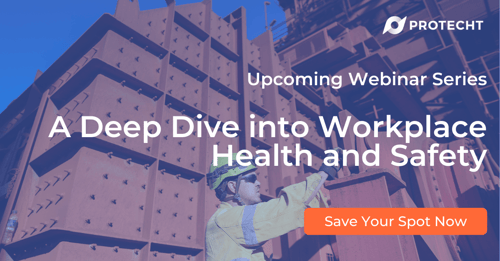In this blog, David Tattam summarised his insights of the fourth live session "Risk and Hazard Assessment" in the webinar series "A Deep Dive into Workplace Health and Safety".
In our previous webinar, we looked at a Risk Management Framework for WHS. We covered:
- ERM Framework
- Value and pitfalls of a Framework
- WHS Risk Framework
- Linking Risk Management to strategic and operational objectives
- Risk Appetite
- Process & Systems Framework
Michael Martin from C-Suite Safety Solutions joined me again for the fourth webinar of the series focusing on Risk & Hazard Assessment.
Risk & Hazard Assessment Framework
The focus of today's Webinar is Risk Identification and Analysis Evaluation and how we can integrate ISO 31000 and ISO 45001.
Risk Assessment is central to the ERM Framework and Hazard Assessment to the WHS Framework.
In our first poll, we asked our participants 'Do you have a formal Risk & Hazard Assessment framework for WHS?' Here are the results:
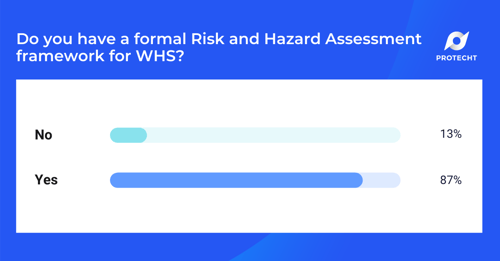
- 87% of Participants do have a formal Risk & Hazard Assessment framework for WHS.
- 13% do not have a formal framework.
As we have previously discussed frameworks are important, but they are not worth the paper they are written on unless they are actually implemented:
“I love portraits. I've always been fascinated by the fact that when you put a frame on
something you create limits for it. It makes it look dead. The same works with labels,
which is a popular hobby most people have nowadays, labeling.”
Nuno Roque
Risk and Hazard Identification and Assessment is an important part of this process.
Risk & Hazard Identification & Assessment
The first step in the Risk Assessment process is Risk & Hazard Identification.
We need to identify our:
• Hazards
• Risks
• Controls
Once identified we then carry out our Risk Analysis. As discussed in previous webinars, at Protecht we big fans of the Bow Tie method. Once we have analysed our Risks, Hazards, and Controls, we need to measure the risks and evaluate them against our Risk Appetite. In WHS our appetite needs to be "As Low As Reasonably Practicable (ALARP).
In the Webinar Michael Martin from C-Suite Safety Solutions reiterates how important it is that we continue to align as much as we can between ERM and WHS and their retrospective ISO standards. As you can see in the below definitions of Risks and Hazards, they are intrinsically linked:
Hazards
A source with a potential to cause injury or ill-health
Risks
Effect of uncertainty
The possibility that harm (death, injury, or illness) might occur when exposed to a hazard)
Michael explores in the webinar the importance of grouping hazards, identification considerations and industry identification techniques. There is a 'no size fits all' technique for risk and hazard assessment as you can see from the results of our 2nd Poll:
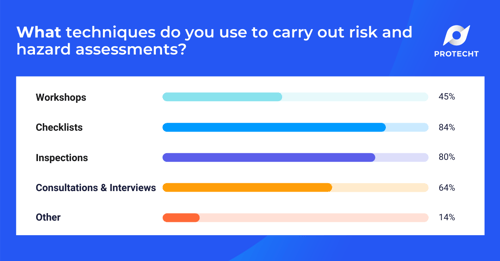
- 45% of participants are doing Workshops
- 84% are using Checklists
- 80% are doing Inspections
- 64% are doing Consultations & Interviews
In the webinar, we discussed the different approaches to assessing the size of WHS risk. In ERM we are seeing a progressive move from qualitative to quantitative assessment, but we need to be careful with this. If we go too quantitative, and we rely on numbers and data too much we may not factor in human element or external variations. I believe a semi-quantitative approach, with an overlay of judgement and subjectivity is a more balanced approach.
In our 3rd Poll we can see that this 'equal balance' approach is shared by nearly 50% of the webinar participants:
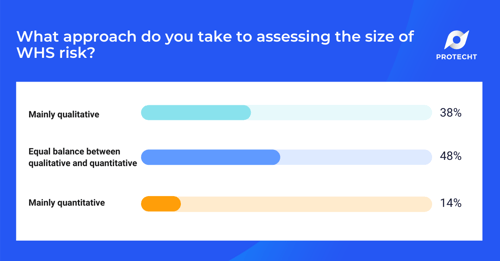
Assessment Follow up & Action
Once we have identified and assessed Risks and Hazards that are outside of our appetite, or reduced ALARP, we need to identify our Issues, Opportunities, and Actions.
In the Webinar we discussed the Risk Responses and Treatment Methods and how this links to the Hierarchy of Controls. We discussed the importance of having a process or system to track and record Issues and Actions and how cultural bias may influence how we approach risk assessment. In our poll 56% of participants felt there was an 'equal balance between cost and risk mitigation':
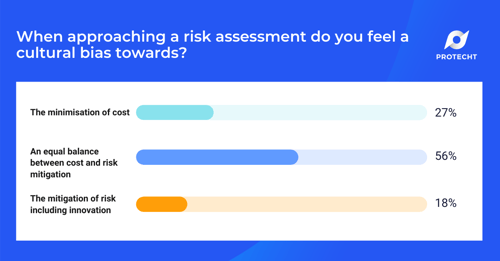
Assessment Reporting
A classic way of reporting Risk and Hazard Assessment is the 5 by 5 Risk Matrix, 99% of you are using this Likelihood and Consequence Matrix:
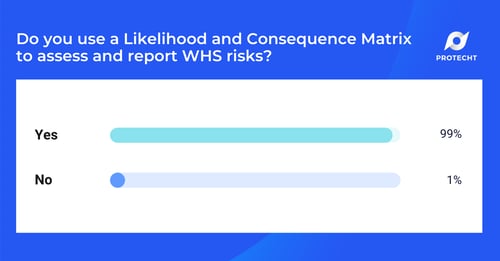
I believe that this 5 by 5 Matrix is starting to show cracks, in future webinars we will explore other ways that we can dynamically report our Risks, such as the Risk in Motion Dashboard.
In our next webinar, the 5th in the series, we will continue our deep dive in WHS by looking at WHS Risk Metrics. We will discuss how to identify, track, monitor and report on these metrics.
To access the recording of the previous webinars and to save your spot for the upcoming webinars click the image below.

